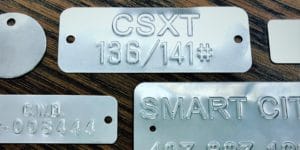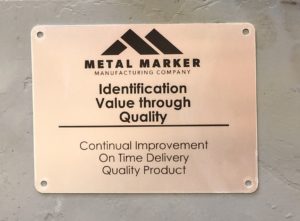It’s easy to take for granted our access to water. Having the ability to turn on a faucet and have clean, drinkable water is a luxury many in the world do not share. It’s also easy to forget that this water needs to be maintained.
Groundwater well inspection is essential to keeping our water safe for public use and consumption. Well permit tags aid in this process by providing clear and accurate information to workers and inspections.
Water Safety
Public water safety is incredibly important. The only way to effectively maintain a high level of safety is through strict regulation and management of water source pollution.
There are strict local ordinances in place to prevent contamination of drinking water.
Contractors and construction workers can’t show up on a job site and just start digging or altering on or near a groundwater well.
Before workers can start digging, they must first get permission from the local government. While this may seem like an inconvenience, accidental contamination of water is a much bigger concern. This could have massive health consequences on the public.
Permit Tags
It doesn’t matter if it’s a groundwater or inject type of well; both are tested and inspected on a semi-regular basis. Frequency varies depending on local guidelines. These wells must be accurately and adequately marked with a metal identification tag.
Metal well tags are marked with the permit number to ensure accurate and long-lasting identification. The tag is then typically attached to the well pipe which comes out of the ground.
Specific guidelines vary by state, and even down to the local level. Certain districts may require more information or data on the nameplate.
Tags are typically obtained from the local government agency or department responsible for regulating wells. This can be a department of water resources or local health department.
Durability
For some applications, durability is an afterthought. However, for some applications that is where your thought process should begin.
In the case of water well marking, the identification tag is going to be outside year round. This means constant exposure to the elements. Sunlight, wind, rain, and even ice can have a substantial impact on your nameplate.
Durable materials and processes must be chosen if your tag needs to last for an extended period of time.
Materials
Durability starts with material. If you expect your identification solution to last many years, you must select a substrate that can handle that amount of use.
Some of the most common materials used for well permit tags includes:
- Stainless Steel
- Aluminum
- Brass
These materials provide the highest level of durability in the identification space.
Processes
Embossing & Stamping
The embossing and stamping processes are very straightforward. A stamp or die set presses into the metal material to create the desired information. For embossed tags this is raised characters, while stamping produces an indented design.

These tags are incredibly durable, and able to withstand many years of outdoor exposure. They are also easy to read, making inspections quicker and more accurate.
Photo Anodization
Another common process for this application is photo anodization. Instead of topical ink printing, this process seals a design inside layers of aluminum material.

With tags rated for 20+ years outdoors, durability is not a concern with photo anodization.
In addition, the process can include barcodes, QR codes, or data matrix codes if necessary.
Attachment
When you are marking a control panel or flat piece of equipment, attaching your nameplates is pretty straightforward. You either use an adhesive or mount the tag using screws or other hardware.
What about applications which don’t have a flat surface to stick the tags on such as well pipes?
There are a few options you have to select from when it comes to applying metal identification on a non-flat surface.
Cable Ties
Cable ties are one of the most popular marking solutions for pipes, wires, and other cylindrical objects.
These unique tags wrap around and attach to themselves. This makes applying them incredibly simple, without requiring any additional hardware.
Wire
Another commonly used option is mounting tags via a wire. A tag with one or more holes is produced, allowing for a wire to slip through.

The wire then wraps around the metal pipe, and holds the tag in place. This is often seen with plumbing or valve tags.
There are various sizes, shapes, and options to accommodate various pipe diameters and applications.
Wrap-Up
Following proper procedures when it comes to well permits is not just about following the rules; it’s about keeping our drinking water safe. Accurate and durable identification tags are the best solution for well permit marking.